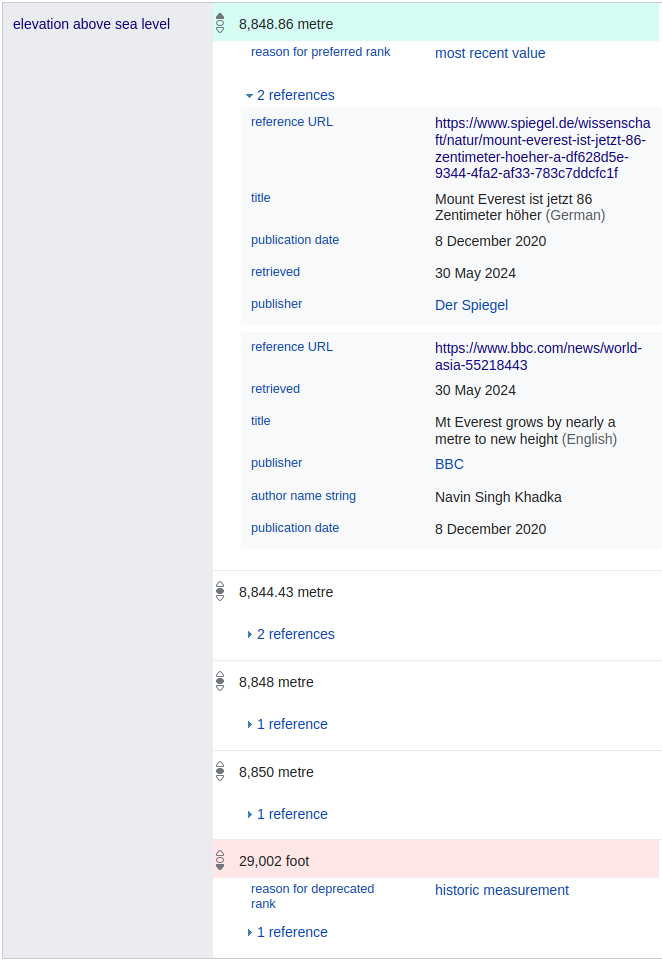Facts are nuanced
You can’t expect to look up who’s the smartest person in the world in a database, or at least not any reputable one, because that’s subjective and requires a nuanced answer. Whereas you might expect to be able to look up something like the height of a mountain, because that’s an objective fact with a (seemingly) simple answer. Projects such as Wikidata aim to create a special kind of database—a knowledge graph—for storing facts about nearly everything.
However, even something that seems like a simple objective fact can be nuanced. Mountain heights change over time. This is due to a combination of plate tectonics and the way we measure height.
For example, consider the statement that the height of Mount Everest is 8,848.86 metres above sea level. In this case, it’s important to capture the nuance that this is according to the official measurement jointly announced by China and Nepal in December 2020, includes snow cover (China and Nepal previously differed on whether to measure rock height or snow height) and uses the International Height Reference System (to avoid discrepencies between official mean sea level measurments in China vs Nepal).
Here’s how this is recorded in the Wikidata item for of Mount Everest:

As you can see, Wikidata includes multiple measurements for Mount Everest and provides references for each. However it doesn’t capture all the nuances of the measurements (such as which height reference system was used and whether it includes snow cover or not) in the way that the Wikipedia text does. The difficulty of capturing these nuances is a major limitation of knowledge graphs.